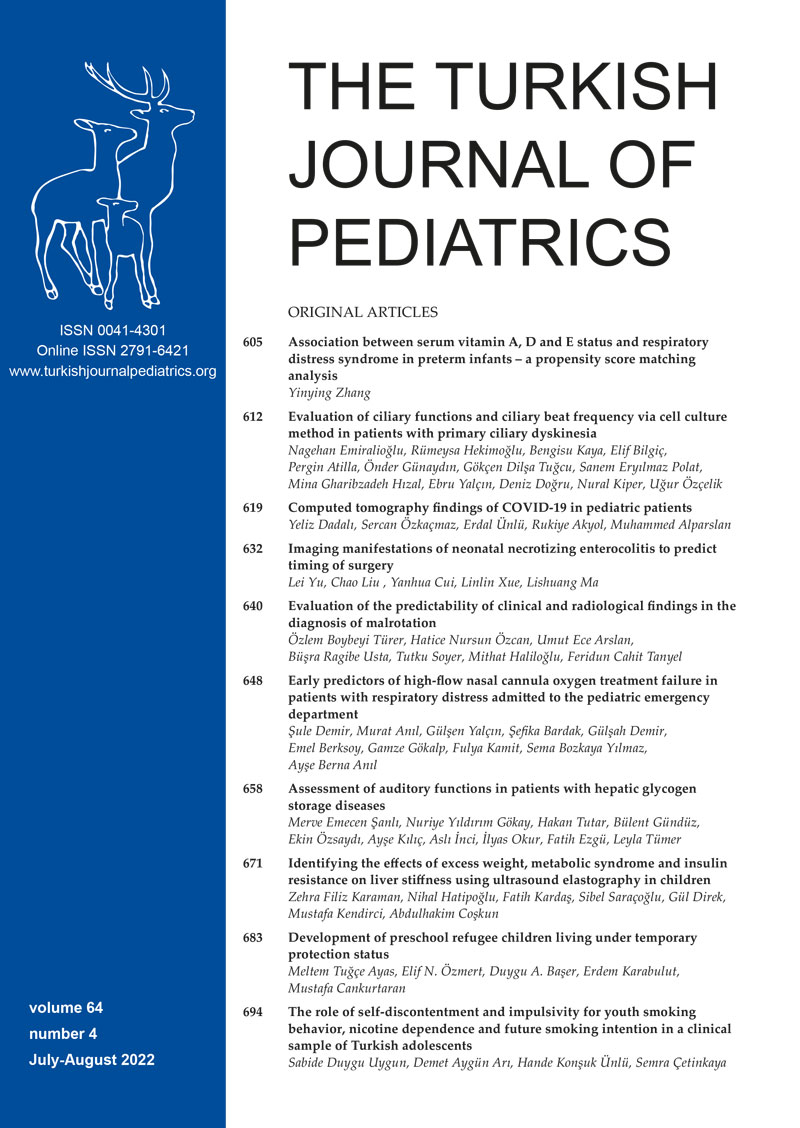Abstract
Background. In this study, we aimed to evaluate the thorax Computed Tomography (CT) findings of pediatric patients diagnosed with coronavirus disease-19 (COVID-19) and to discuss these findings in light of the results of adult patients from the literature.
Methods. The CT scans of pediatric patients (1-18 years old) with a diagnosis of COVID-19 by reverse transcriptase-polymerase chain reaction (RT-PCR) in our hospital between March 2020 and January 2021 were retrospectively reviewed. The scans were interpreted regarding the distribution and localization features, and involvement patterns including ground-glass opacity, consolidation, halo/reversed halo sign, interlobular septal thickening, air bronchograms and bronchiectasis. The frequencies of these findings in pediatric cases in our study were recorded.
Results. A total of 95 patients with a mean age of 13±4.6 years were included in this study. Among them, 34 (36%) had lesions associated with COVID-19 on CT scans. Bilateral involvement was detected in 15 (44%) while unilateral in 19 (56%) patients. Eighteen (53%) patients had single lobe involvement. In 16 (47%) patients a solitary lesion was detected and in 18 (53%) multiple lesions were present. Ground-glass opacity appearance was observed in 28 (82%), consolidation in 9 (26%), and ground-glass opacity with consolidation in 8 (24%), halo sign in 9 (26%), reversed halo sign in 2 (6%), interlobular septal thickening (interstitial thickening) in 1 (3%) patients.
Conclusions. As symptoms are relatively milder in children with COVID-19, CT findings are less extensive than in adults. It is essential to know the thorax CT findings that aid in the diagnosis and follow-up of the disease.
Keywords: COVID-19, chest imaging, children, computed tomography, pneumonia
Copyright and license
Copyright © 2022 The Author(s). This is an open access article distributed under the Creative Commons Attribution License (CC BY), which permits unrestricted use, distribution, and reproduction in any medium or format, provided the original work is properly cited.














